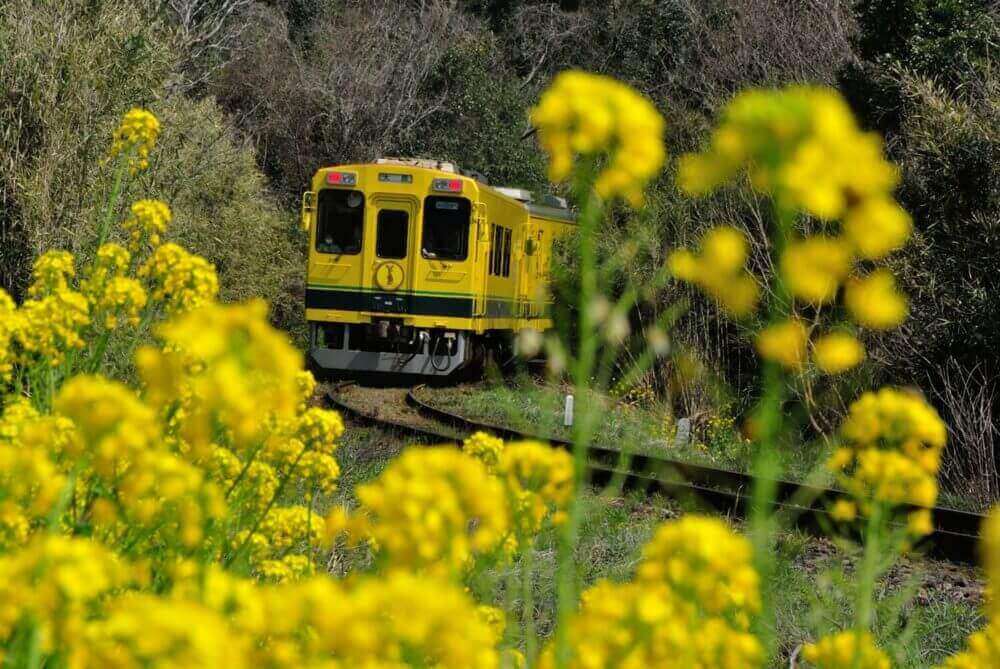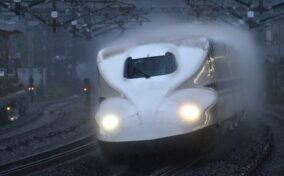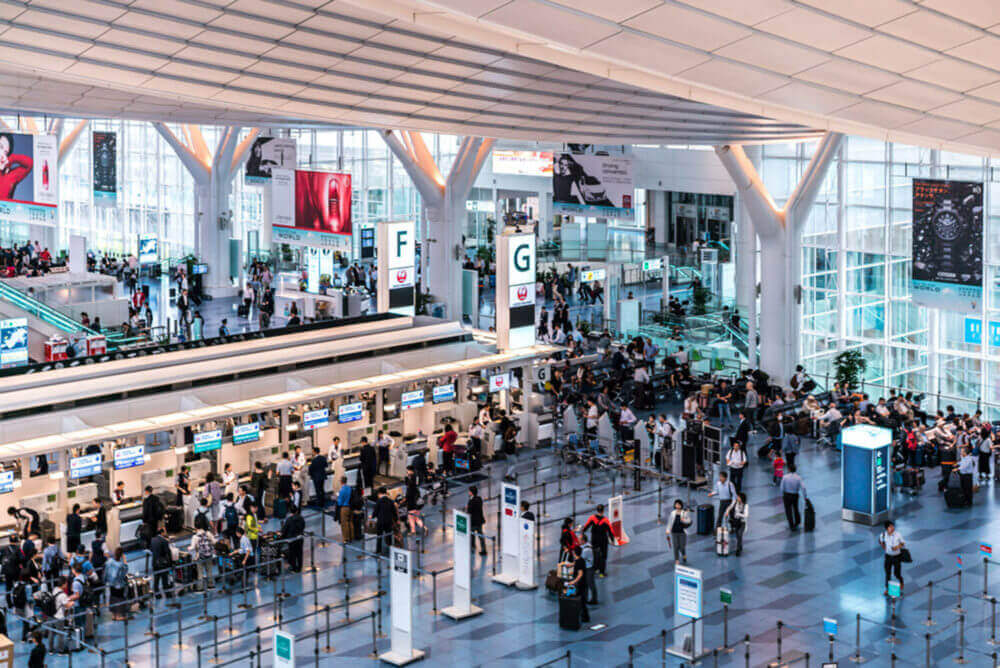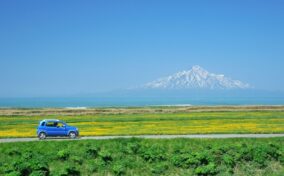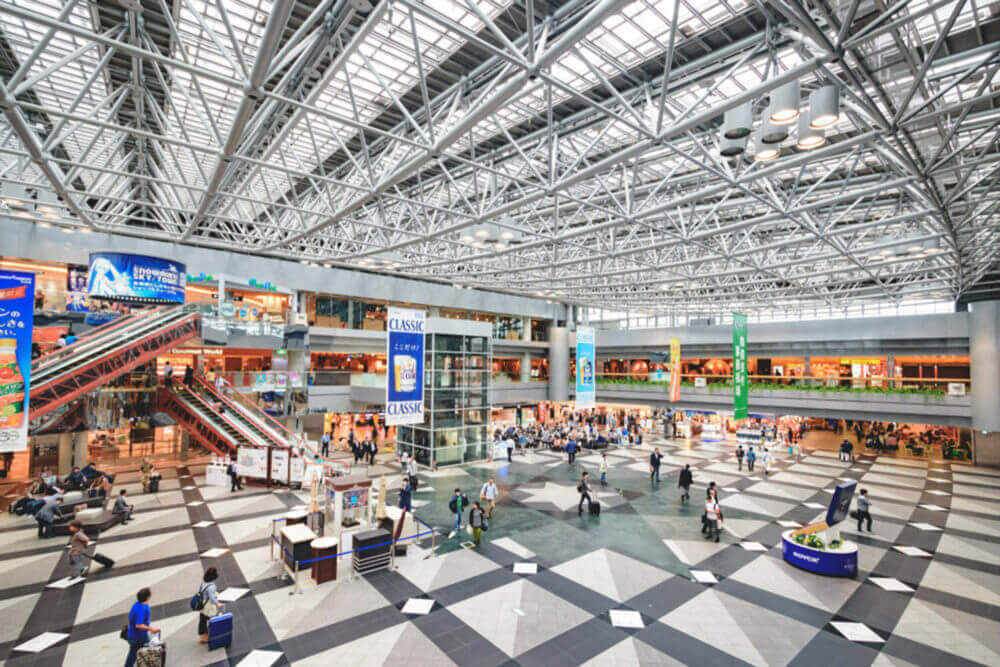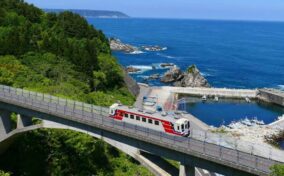In the Japan, the network of Shinkansen (Bullet train) is spreading. The Shinkansen is a super express that exceeds 200 km/h. If you use the Shinkansen, you can move comfortably between the major cities of Japan very quickly. If you use an airplane, you have to go through the airport, so It takes time in surprising. In contrast, the Shinkansen travels between major stations, so you can travel very efficiently. You should enjoy riding the Shinkansen in Japan!
On this page, you will find the basics of how to use the Shinkansen and tips for traveling in Japan by Shinkansen.
Table of Contents
Outline of Shinkansen network
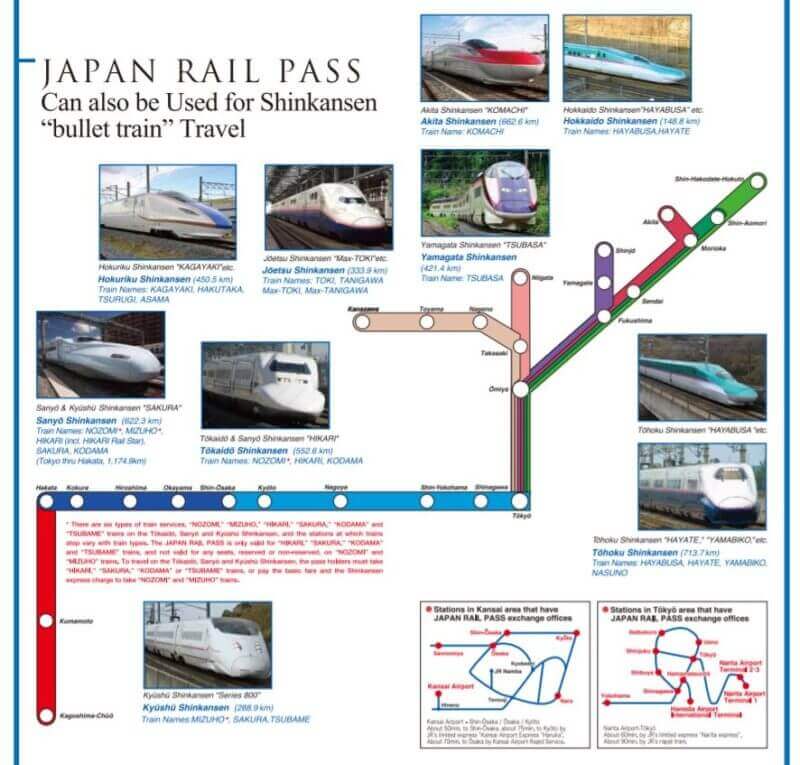
Clicking the image will display this Shinkansen map on details of Japan Rail Pass on a separate page
How to book and purchase Shinkansen tickets
Regarding shinkansen ticket reservation and purchase procedures, I introduced the details in the following article. Including the Japan Rail Pass, please refer to this article for details.
Nozomi, Hikari, Kodama … How different?
The Shinkansen network consists of one long route that penetrates the Japanese archipelago and several routes branching from it.
In Shinkansen routes, there are trains that only stop at major stations and trains that stop at each station. For example, on the Tokai Shinkansen connecting Tokyo and Osaka, there are “Nozomi” “Hikari” stops only at major stations and “Kodama” at each station. Every train, the vehicles used are almost the same. However, because the number of stations to stop is different, the time required will differ.
The following are each stops on the Tokaido Shinkansen. In addition to the station where Nozomi stops, Hikari stops at some stations. Which station Hikari stops depends on the train. The time required from Tokyo station to Shin-Osaka station is about 2 hours 33 minutes by Nozomi, about 2 hours 53 minutes by Hikari, about 4 hours and 4 minutes by Kodama. Since Kodama waits until Nozomi and Hikari pass through the stations, the time to stop at the stations is long. Nozomi and Hikari often run over quite a long section. For example, when departing from Tokyo, Nozomi and Hikari often go to Hiroshima or Hakata.
| Station | Nozomi | Hikari | Kodama |
| Tokyo | stop | stop | stop |
| Shinagawa | stop | stop | stop |
| Shinyokohama | stop | stop | stop |
| Odawara | — | (stop) | stop |
| Atami | — | (stop) | stop |
| Mishima | — | (stop) | stop |
| Shin Fuji | — | — | stop |
| Shizuoka | — | (stop) | stop |
| Kakegawa | — | — | stop |
| Hamamatsu | — | (stop) | stop |
| Toyohashi | — | — | stop |
| Mikawa Anjo | — | — | stop |
| Nagoya | stop | stop | stop |
| Gifu Hashima | — | (stop) | stop |
| Maibara | — | (stop) | stop |
| Kyoto | stop | stop | stop |
| Shin Osaka | stop | stop | stop |
Recommended seats on the bullet train
The last seat of each vehicle
Shinkansen, unfortunately, has little space to put big luggage. If you ride a Shinkansen with a big bag, I recommend that you sit in the seat at the end of each vehicle. If you sit in the last seat, you can put your bag behind your seat.
Seat on the side where Mt. Fuji is visible
If you move from Tokyo to Osaka or Kyoto, I recommend that you sit on the right seat. Mt. Fuji looks to the right. Conversely, if you move from Osaka or Kyoto to Tokyo, sitting on the left side is easier to see MT.Fuji.
You can tell staff your wishes when buying Shinkansen tickets in Japan. Even ticket vending machines installed at JR stations, you can specify the seat of your choice. If you can not get the seat you want before you leave for Japan, please first reserve a seat anywhere. Then it would be nice to ask attendants to change your seats at the Japanese station.
Tokaido Shinkansen
Tokyo – Shin-Osaka : Line length 515.4 km
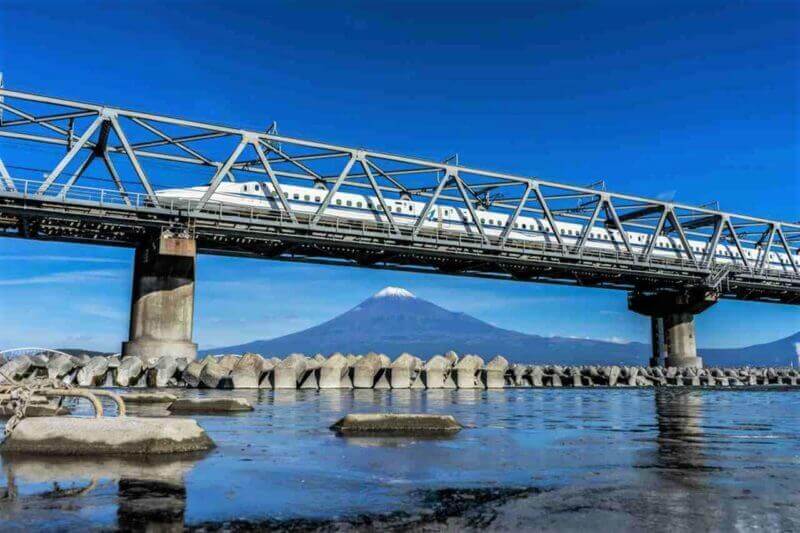
The Tokaido Shinkansen bullet train passing through Mount Fuji and the Fujikawa bridge with blue sky background = shutterstock
Trains
Nozomi (fast)
Nozomi is the fastest train on the Tokaido Shinkansen. It stops at Tokyo Station, Shinagawa Station, Shin-Yokohama Station, Nagoya Station, Kyoto Station, Shin Osaka Station only. There are many trains that stop at Okayama station, Hiroshima station, Hakata station, etc, get on the Sanyo Shinkansen west of the Shin – Osaka station.
Hikari (semi-fast)
Hikari is the fastest train after Nozomi. Hikari’s vehicle is the same as Nozomi, but it stops at more stations than Nozomi. The stop is different for each train. Some Hikari run to Okayama station on Sanyo Shinkansen.
Kodama (local)
Kodama stops at all the stations. Kodama waits at the station until Nozomoi or Hikari passes, so it will take some time in surprise. If you go to a station where Kodama only stops, you should go to a nearby station first by Nozomi or Hikari and then transfer to Kodama.
Stations
Sanyo Shinkansen
Shin-Osaka – Hakata : Line length 553.7 km
Trains
Nozomi (fast)
Nozomi is the fastest train that runs on both the Tokaido Shinkansen and Sanyo Shinkansen lines.
Mizuho (fast)
Mizuho is the fastest train that runs on both the Sanyo Shinkansen and Kyushu Shinkansen lines. It connects Shin-Osaka Station and Kagoshima-Chuo Station in Kagoshima Prefecture located in Southern Kyushu. Within the Sanyo Shinkansen, all trains stop at Shin-Osaka, Shin-Kobe, Okayama, Hiroshima, Kokura and Hakata stations, and some trains also stop at Himeji station. Mizuho does not stop at Fukuyama station, Tokuyama station, Shin Yamaguchi station where some Nozomi stops.
Sakura (semi-fast)
Sakura is a train equivalent to Hikari in Tokaido Shinkansen. As Sakura stops at a few more stations than Nozomi, Sakura stops at a few more stations than Mizuho. Sakura stops at relatively many stations, especially in the Kyushu Shinkansen section. The stations where Sakura stops more than Mizuho will vary depending on the train.
Hikari (semi-fast / local)
There are 2 types of Hikari running on Sanyo Shinkansen. One is a type that is getting on the Sanyo Shinkansen from Tokyo Station. It is fast from Tokyo station to Shin-Osaka station next to Nozomi, but it stops at each station on the west side from Shin-Osaka station. However, in Hikari entering the Sanyo Shinkansen from Nagoya, there are trains that pass through many stations as much as Sakura.
The other is a train that runs only on the Sanyo Shinkansen section. It pass through many stations as much as Sakura.
Kodama (local)
Kodama stops at each station as well as the Kodama of the Tokaido Shinkansen.
Stations
Kyushu Shinkansen
Hakata – Kagoshima-Chuo : Line length 256.8 km
Trains
Mizuho (fast)
Mizuho is the fastest train to travel on the Kyushu Shinkansen and Sanyo Shinkansen. All trains stop at Hakata Station, Kumamoto Station, Kagoshima-Chuo Station in the Kyushu Shinkansen, and some temporary trains also stop at Kurume and Kawauchi stations. From Shin-Osaka station to Kagoshima-Chuo station is the fastest train in 3 hours and 42 minutes. It is one hour and 17 minutes from Hakata station to Kagoshima-Chuo station.
Sakura (semi-fast)
Sakura is a semi-fast train running on the Kyushu Shinkansen and the Sanyo Shinkansen. It stops at a few more stations than MIzuho. On the Kyushu Shinkansen, all trains stop at Hakata Station, Shin Taursu Station, Kurume Station, Kumamoto Station, Kawauchi Station and Kagoshima-Chuo Station. And, it also stops at some other stations. The station depends on the train.
Tsubame (local)
Tsubame stops at all stations of Kyushu Shinkansen.
Stations
Tohoku Shinkansen
Tokyo – Shin Aomori : Line length 674.9 km

Shinkansen vehicles of other routes are often connected with the main route vehicles and are operated together to the station on the way, Tokyo, Japan = shutterstock
The Tohoku Shinkansen heading from the Tokyo station to the northeast direction. It passes through Fukushima station, Sendai station, Morioka station, etc. and reaches Shin Aomori station in the northernmost part of Honshu. From the Shin Aomori station, the Hokkaido Shinkansen continues. There are two branch lines in Tohoku Shinkansen. It is Akita Shinkansen and Yamagata Shinkansen. These trains are connected with the main trains of the Tohoku Shinkansen to the station branching from the Tohoku Shinkansen. So, if you use these Shinkansen, please be careful not to mistake the train when you board.
Trains
Hayabusa (fast)
Hayabusa is the fastest Shinkansen running through the section from Tohoku Shinkansen and Hokkaido Shinkansen (From Tokyo station to Shin-Hakodate-Hokuto station). It runs at a maximum speed of 320 km / h. Hayabusa only have reserved seats. There are ordinary cars (economy), green car (first class) and Grand class in Hayabusa. A Grand Class carriage has only three seats per row.
Yamabiko (semi-fast)
Yamabiko is a little fast train operated between Tokyo station – Sendai station and Morioka station (there are two types of endpoints, Sendai and Morioka). It stops mainly at Ueno Station, Omiya Station, Utsunomiya Station, Koriyama Station, Fukushima Station and Sendai Station – Morioka Station.
Hayate
Hayate is a train whose position is difficult to understand at present. It was the fastest train before. However, since Hayabusa came out, it was positioned as a train complementing Hayabusa. In the near future, it seems that there will be no regular service on Tohoku Shinkansen. It will be operated mainly around the Hokkaido Shinkansen.
Komachi (Akita Shinkansen)
Komachi is a vehicle of the Akita Shinkansen. When going to Tokyo from Akita, it will be operated together with Hayabusa, the Tohoku Shinkansen vehicle, in the Tohoku Shinkansen section. Then it is separated from Hayabusa at Morioka station and it is operated to Akita station.
Tsubasa (Yamagata Shinkansen)
Tsubasa is a vehicle of the Yamagata Shinkansen. When going from Tokyo to Yamagata, it will be operated together with Yamabiko which is the Tohoku Shinkansen car in the section of Tohoku Shinkansen. Then it is separated from Yamabiko at Fukushima station and it is operated to Yamagata prefecture. There are two types of end points: Yamagata station and Shinjo station.
Nasuno (local)
Nansuno is a local train that runs between Tokyo Station – Nasushiobara and Koriyama stations. It corresponds mainly to demand between Tochigi Prefecture – Tokyo central city in the morning and evening.
Stations
Akita Shinkansen
Morioka – Akita : Line length 127.3 km
The Akita Shinkansen branches at Morioka station from Tohoku Shinkansen and runs in Akita Prefecture. It runs from Tokyo Station to Morioka Station with Hayabusa connected at maximum speed of 320 kilometers. However, since it runs through the tracks of regular trains from Morioka station to Akita station, the maximum speed is limited to 130 kilometers.
Trains
Komachi
Komachi is a vehicle of the Akita Shinkansen. When going to Tokyo from Akita, it will be operated together with Hayabusa, the Tohoku Shinkansen vehicle, in the Tohoku Shinkansen section. Then it is separated from Hayabusa at Morioka station and it is operated to Akita station.
Stations
Yamagata Shinkansen
Fukushima – Yamagata – Shinjo : Line length 148.6 km
Yamagata Shinkansen branches from Fukushima station from the Tohoku Shinkansen and runs in Yamagata Prefecture. It runs from Tokyo station to Fukushima station connected with Yamabiko. However, since it runs from the Fukushima station to Shinjo station on the tracks of regular trains, the maximum speed in this section is limited to 130 kilometers.
Trains
Tsubasa
Tsubasa is a vehicle of the Yamagata Shinkansen. When going from Tokyo to Yamagata, it will be operated together with Yamabiko which is the Tohoku Shinkansen car in the section of Tohoku Shinkansen. Then it is separated from Yamabiko at Fukushima station and it is operated to Yamagata prefecture. There are two types of end points: Yamagata station and Shinjo station.
Stations
Hokkaido Shinkansen
Shin Aomori – Shin-Hakodate-Hokuto : Route distance 360.3 km
Currently, the northernmost station of the Shinkansen is Shin-Hakodate-Hokuto Station in southern Hokkaido. The section from Shin-Aomori station to Shin-Hakodate-Hokuto station in the northernmost part of Honshu is called the Hokkaido Shinkansen. When going to Hokkaido from Honshu, the Shinkansen passes through the tunnel at the bottom of the sea. It is said that the Hokkaido Shinkansen will be extended to Sapporo around 2031.
Trains
Hayabusa (fast)
Hayabusa is the fastest Shinkansen running through the section from Tohoku Shinkansen and Hokkaido Shinkansen (From Tokyo station to Shin-Hakodate-Hokuto station). It runs at a maximum speed of 320 km / h. Hayabusa only have reserved seats. There are ordinary cars (economy), green car (first class) and Grand class in Hayabusa. A Grand Class carriage has only three seats per row.
Hayate (local)
Hayate is operated between Morioka – Shin Aomori – Shin-Hakodate-Hokuto Station.
Stations
Shin-Hakodate-Hokuto station (Hokkaido)
Shin-Aomori station (Aomori Prefecture)
Hokuriku Shinkansen
Tokyo – Takasaki – Kanazawa : Route distance 345.5 km (Takasaki – Kanazawa)

Hokuriku Shinkansen running in Kanazawa on the Japan Sea side, Ishikawa Prefecture, Japan = shutterstock
The Hokuriku Shinkansen is a new Shinkansen planned to go from Tokyo Station to the Shin – Osaka Station via the Japan Sea side area (called Hokuriku in Japan). Currently, the Hokuriku Shinkansen has a section from Tokyo station to Kanazawa station in Ishikawa prefecture opened. It runs from the Tokyo station to the Takasaki station on the way, the same line as the Joetsu Shinkansen, and branches to the west from Takasaki station.
Trains
Kagayaki (fast)
Kagayaki is the fastest train on the Hokuriku Shinkansen. It stops at Tokyo Station, Ueno Station, Omiya Station, Nagano Station, Toyama Station and Kanazawa Station. By using Kagayaki, it takes 2 hours and 28 minutes from Tokyo station to Kanazawa station.
Hakutaka (semi-fast)
Hakutaka is the fast train next to Kagayaki on the Hokuriku Shinkansen line. It runs from Tokyo station to Nagano station at almost the same speed as Kagayaki, but from Nagano station to Kanazawa station it stops at each station.
Asama (local)
Asama is a train operated between Tokyo station and Nagano station. It basically stops at each station in this section. Since there are many passengers in this section, Asama responds to those needs.
Tsurugi (local)
Tsurugi is a local train that runs from the Toyama station to the Kanazawa station.
Stations
Joetsu Shinkansen
Tokyo – Omiya – Nigata : Route distance 269.5 km (Omiya – Nigata)
The Joetsu Shinkansen is the Shinkansen line running from the Tokyo station to the Niigata station on the north side. Strictly speaking, it is not Tokyo Station, but originates from Omiya station, but since all trains are driving to the Tokyo station, it is generally regarded as the Shinkansen operated from Tokyo Station to Niigata Station.
Trains
Toki (Main)
The Joetsu Shinkansen is a Shinkansen line running from the Tokyo station to the Niigata station on the north side. Strictly speaking, it is not the East Station, but originates from Omiya station, but since all trains are driving to the Tokyo station, it is generally regarded as a Shinkansen operated from Tokyo Station to Niigata Station.
Tanigawa (local)
Tanigawa is a train that runs between Tokyo Station and Echigo Yuzawa Station and stops at each station.
Tanigawa also has two-story vehicles in addition to the usual type of vehicles. The two-story train is called “Max Tanigawa”.
Stations
Thank you for reading to the end.


